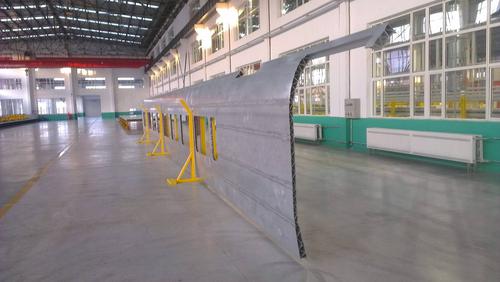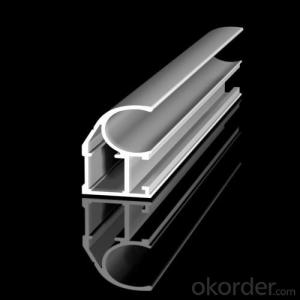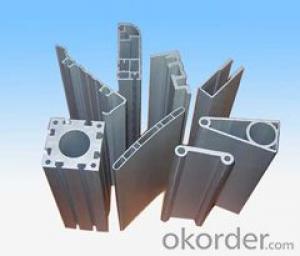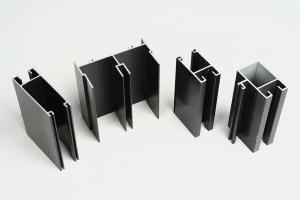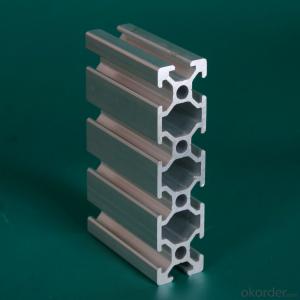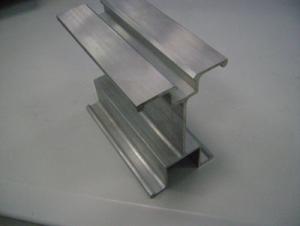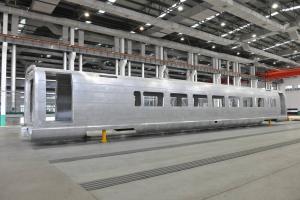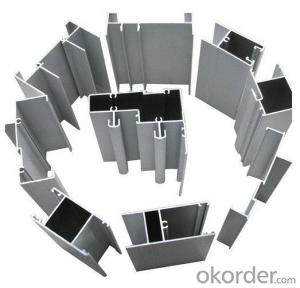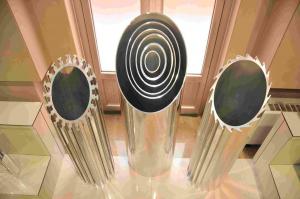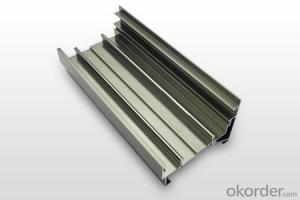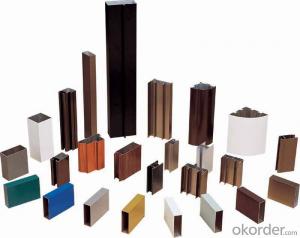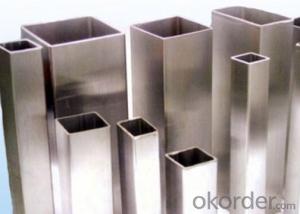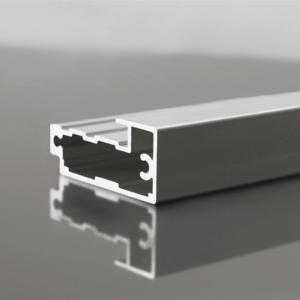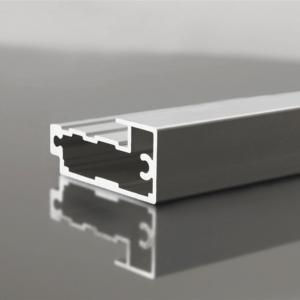Wholesale Aluminum Extrusion Profiles for Carbody Aluminium Sidewall Profile
- Loading Port:
- China Main Port
- Payment Terms:
- TT OR LC
- Min Order Qty:
- -
- Supply Capability:
- -
OKorder Service Pledge
Quality Product, Order Online Tracking, Timely Delivery
OKorder Financial Service
Credit Rating, Credit Services, Credit Purchasing
You Might Also Like
Carbody Aluminium Sidewall车体侧墙型
1. Usage:High-speed railway and Metro
2. Surface: Mill finish or anodized etc. based on customer’s needs
3. Alloy: alloy temper 6005A
4. Size: various size available based on customer’s requirement
5. Package: Standard packaging
6. Standard: EN755
7. Lead time: shortest delivery time
- Q: This question asks for a list of various uses of aluminum profiles within the construction industry.
- <p>Aluminum profiles have a wide range of applications in the construction industry due to their strength, durability, and lightweight properties. They are used in window and door frames for their resistance to corrosion and ease of maintenance. They are also employed in curtain walls, which are the outer coverings of buildings, providing both aesthetic appeal and structural integrity. Aluminum profiles are utilized in the construction of scaffolding for their high strength-to-weight ratio, ensuring safety and stability. Additionally, they are used in the manufacturing of modular buildings and prefabricated structures due to their ease of assembly and disassembly. Other applications include roofing systems, flooring structures, and as support beams in various construction projects.</p>
- Q: Can aluminum profiles be used in the production of agricultural structures?
- Aluminum profiles have the capability to be utilized in the manufacturing of agricultural structures. Aluminum, as a material, is known for its versatility and lightweight nature, providing exceptional strength and durability. It possesses resistance against corrosion, making it suitable for agricultural environments where exposure to moisture and chemicals is common. Agricultural structures such as greenhouses, barns, storage facilities, and animal housing can be constructed using aluminum profiles. The profiles are easily assembled and can be tailored to meet specific design requirements, allowing for flexibility in the construction process. In addition, aluminum profiles require minimal maintenance over time, making them low maintenance. They are also environmentally friendly due to the high recyclability of aluminum, which reduces the long-term environmental impact of agricultural structures. In summary, aluminum profiles offer a multitude of advantages for the production of agricultural structures, including strength, durability, resistance to corrosion, ease of assembly, customization options, low maintenance, and sustainability.
- Q: Are aluminum profiles suitable for use in the defense industry?
- Yes, aluminum profiles are suitable for use in the defense industry. Aluminum is a lightweight, yet strong material that offers excellent corrosion resistance and high durability. It is commonly used in the defense industry for applications such as military vehicles, aircraft structures, and weapon systems. Additionally, aluminum profiles can be easily customized and fabricated to meet specific requirements, making them a versatile choice for defense applications.
- Q: This question asks for the correct procedure to install aluminum profiles.
- <p>To install aluminum profiles correctly, follow these steps: 1. Measure and mark the positions where the profiles will be installed. 2. Clean the surfaces to ensure proper adhesion. 3. Use a suitable adhesive or mechanical fasteners recommended for aluminum. 4. Align the profile with the marked positions and secure it in place. 5. Check for level and plumb, and adjust as needed. 6. Wipe away any excess adhesive and clean the profile. 7. Allow the adhesive to cure according to the manufacturer's instructions. 8. Inspect the installation for any gaps or misalignments and make corrections if necessary. Always refer to the specific installation guidelines provided by the aluminum profile manufacturer for best results.</p>
- Q: What are the thermal properties of aluminum profiles?
- Due to its inherent characteristics as a metal, aluminum profiles possess favorable thermal properties. With its high thermal conductivity, aluminum can efficiently transfer heat, making it an ideal choice for applications requiring heat dissipation or thermal management. Furthermore, aluminum profiles exhibit minimal expansion and contraction with temperature changes due to their low coefficient of thermal expansion. This exceptional stability and resistance to warping or distortion, even in extreme temperature variations, make aluminum profiles highly reliable. In addition, aluminum profiles have a comparatively low melting point, making them suitable for applications involving high operating temperatures. The ability of aluminum to withstand such temperatures without compromising its structural integrity further enhances its thermal properties. Moreover, aluminum profiles demonstrate excellent thermal insulation properties as they are not easily conductive of heat. This makes them a suitable choice for applications requiring thermal insulation or the prevention of heat transfer, such as in building and construction or HVAC systems. In summary, the thermal properties of aluminum profiles, including high thermal conductivity, low coefficient of thermal expansion, high melting point, and good thermal insulation, contribute to their versatility and widespread use across various industries, ranging from automotive and aerospace to electronics and construction.
- Q: This question asks for a list of various fastening methods used to connect aluminum profiles to the structural frames of buildings.
- <p>There are several types of fasteners used to attach aluminum profiles to building frames, including: 1) Bolts and Nuts: Commonly used for strong, secure connections. 2) Rivets: Provide a permanent connection that is resistant to vibration. 3) Self-Tapping Screws: Can be used in materials without pre-drilling. 4) Structural Glue: Offers a strong bond and is often used in combination with mechanical fasteners. 5) Welding: Used for permanent, load-bearing connections, though not common for aluminum due to the risk of thermal distortion. 6) Clamps and Brackets: Used for temporary or adjustable connections. 7) Adhesive Tapes: Provide a quick and easy method of attachment, though not as strong as other methods. Each type of fastener has its own advantages and is chosen based on the specific requirements of the construction project.</p>
- Q: What are the potential health hazards for individuals working with aluminum profiles in the construction industry?
- <p>Working with aluminum profiles in construction generally has low health risks compared to other materials. However, there are some considerations. Inhalation of aluminum dust can cause respiratory issues, and prolonged exposure may lead to a condition known as aluminum pneumoconiosis. Additionally, workers should be cautious of sharp edges that can cause cuts. Protective measures such as using masks and safety glasses are recommended. Aluminum itself is not magnetic and does not emit radiation, so there are no risks associated with these properties. Overall, with proper safety practices, the health risks can be minimized.</p>
- Q: Can aluminum profiles be used for electrical applications?
- Yes, aluminum profiles can be used for electrical applications. Aluminum is a good conductor of electricity and has excellent thermal conductivity, making it suitable for various electrical applications such as conductors, busbars, heat sinks, and electrical enclosures.
- Q: Can aluminum profiles be used for stage and event structures?
- Stage and event structures can indeed make use of aluminum profiles. Aluminum, being both lightweight and durable, is a widely utilized material in the construction industry for a range of purposes, including stage and event structures. Aluminum profiles possess versatility, allowing for easy shaping, cutting, and joining to create customized structures. With an excellent strength-to-weight ratio, they are well-suited for supporting heavy equipment and ensuring the safety of performers and audience members. Moreover, aluminum profiles can be powder-coated or anodized, providing both a decorative finish and protection against corrosion. This enhances the visual appeal and longevity of the structures. In conclusion, aluminum profiles are a popular option for stage and event structures due to their versatility, strength, and aesthetic qualities.
- Q: What are the specific features of industrial aluminum profiles?
- What are the main characteristics of aluminum and aluminum alloys?1, small density: aluminum density of 2.7, about copper (8.9) or steel (7.8) 1/3. Low density for aerospace aircraft, ships, vehicles and buildings are very useful amount of light, but also can save the moving charges and processing fees, reduce the cost of application in industry, civil construction industry and other fields more widely;2, good corrosion resistance and weatherability: aluminum and Aluminum Alloy in the atmosphere to form a layer of hard and dense, with good corrosion resistance of oxide film by anodic oxidation, electrophoretic coating, powder coating and other surface treatment can improve the corrosion resistance of aluminum;3., good decoration: aluminum alloy has good plasticity, can process all kinds of specifications and formed products, through surface treatment, can produce different properties, different colors of the film, with good decorative;4.: good thermal conductivity aluminum thermal conductivity is very high, but silver, gold and copper in the metal, is 3 times the same weight of iron, aluminum is 12 times that of iron so Aluminum Alloy is a good material for manufacturing radiator, heater.Guangdong Changyuan aluminum technology: Aluminum Alloy profiles have the sun room, grape, pavilion, carport, sun canopy, window shelf,
Send your message to us
Wholesale Aluminum Extrusion Profiles for Carbody Aluminium Sidewall Profile
- Loading Port:
- China Main Port
- Payment Terms:
- TT OR LC
- Min Order Qty:
- -
- Supply Capability:
- -
OKorder Service Pledge
Quality Product, Order Online Tracking, Timely Delivery
OKorder Financial Service
Credit Rating, Credit Services, Credit Purchasing
Similar products
Hot products
Hot Searches
Related keywords

